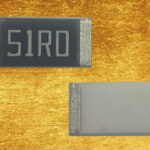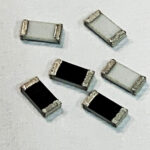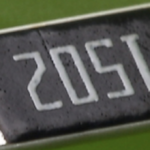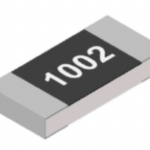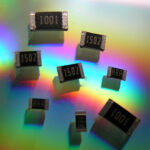Many types of electronic products across a variety of market segments require higher reliability components. Automotive grade resistors offer increased reliability and improved performance without the high cost and limited availability of components procured to established reliability military specifications. For those applications that also require a defined pulse withstanding the options become limited. Stackpole’s RPCA […]
Resistors
Chip resistors available for high-power GaN battery management
For GaN-based battery management for consumer electronics and computer peripherals, the demand for high power and precision is escalating. While a variety of technology options offer lower resistance values suited for these applications, all-metal element resistors, like Stackpole’s CSS/CSSH Series, remain a popular choice despite their higher cost and wider tolerance range of 1% and […]
EC-Q200 qualified automotive-grade chip resistor is also anti-sulfur and lead-free
Stackpole introduces the RMEA Series, an automotive grade chip resistor that is not only fully lead-free but also AEC-Q200 qualified and anti-sulfur. Automotive grade chip resistors adhere to higher materials and process standards as well as 100% AOI to ensure the consistent performance and long-term reliability that general-purpose chip resistors cannot guarantee. The RMEA is […]
High-power, thin film chip resistors withstand harsh environments
Industrial electronic controls and instrumentation pose challenges to designers. Industrial applications require high power handling and stability in harsh environmental environments, but also may need precision tolerances and TCRs; a difficult combination for film chip resistors. It is difficult to achieve high power ratings with thin film resistor technology normally used for precision requirements. Stackpole’s […]
Current-sense resistors feature low TCR
Bourns, Inc. introduced four high-power, ultra-low ohmic current sense resistor series. The latest current measurement devices from Bourns are designed to help save energy while maximizing sensing performance in power electronics designs. The four CSI Model Series feature low-temperature Coefficient of Resistance (TCR) for operating accuracy over a wide temperature range and excellent long-term stability. Their […]
Current sense resistor offers higher power rating in tiny 1206 package
KOA Speer Electronics introduces a one-watt 1206-size automotive current sense resistor, the new UR73VH2B. The UR73VH2B offers a higher power rating in the smaller 1206 package size. It extends the resistance range for the UR73VHB by encompassing 100m to 1Ω, has a T.C.R. of ±100ppm/°C, and a standard tolerance of ±1%. It also has a […]
500 mA dual RETs offer high-power load switching for space-constrained applications
Nexperia released a new series of 500 mA dual resistor-equipped transistors (RET) in ultra-compact DFN2020(D)-6 packaging. These devices have been designed for load switching in wearables and smartphones as well as for use in digital circuits with higher power requirements. Such as space-constrained computing, communications, industrial, and automotive applications. Notably, the RET in DFN configuration […]
What you need to know about potentiometers
From analog volume controls to precision measurement devices, potentiometers offer engineers a reliable means of achieving control and precision in electrical systems. Commonly referred to as “pots,” these devices are essentially resistors featuring a mechanical adjustment mechanism that allows for manual change of their resistance. Their basic principles and concept date to the 1800s with […]
Thin film precision resistors offer full capability up to 80°C, operation up to 170°C
Automotive and industrial applications may have harsh environmental requirements for resistors. When those requirements include high-temperature capability and high precision, options are limited. Stackpole’s RNHT thin film precision resistors offer full power capability up to 85 degrees C and operation up to 170 degrees C. The automotive grade RNHT is AEC qualified and offers a […]
CM series carbon matrix resistors
RCD Components, under the iNRCORE Family of Brands, is launching a new line of carbon matrix resistors comparable to the now unavailable Allen Bradley and other aftermarket Carbon Composition parts that have been marked end-of-life. The line enhances stability and reduces the common moisture-related issues of the Carbon Composition line, CC series. Ideal for Hi-Rel, Military, […]

